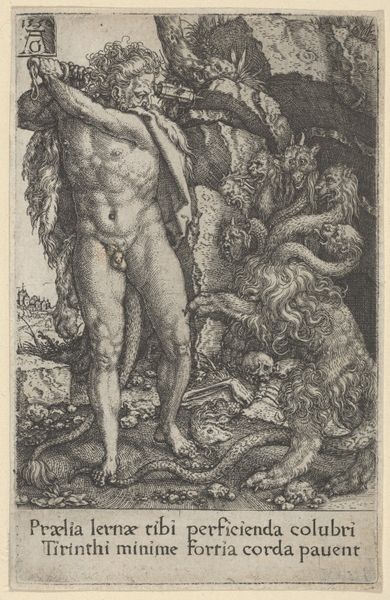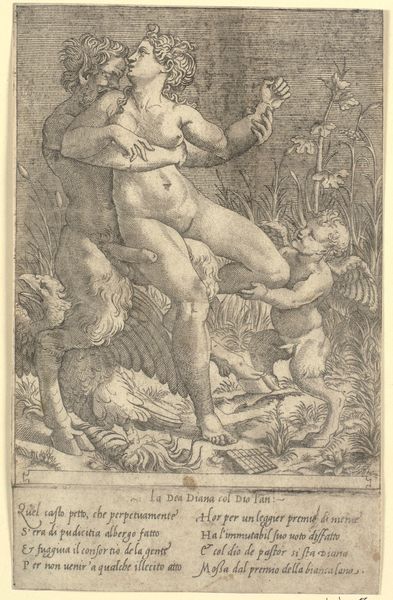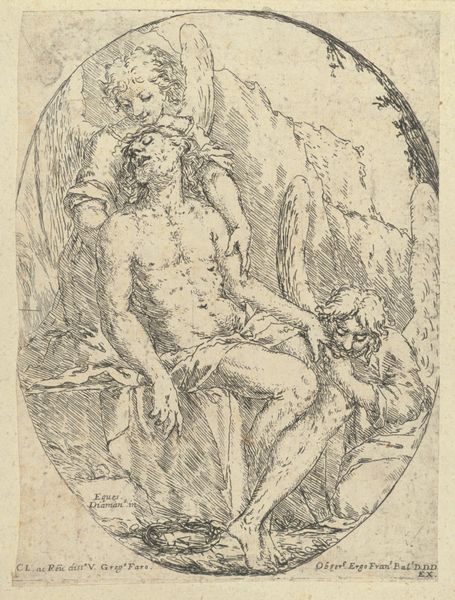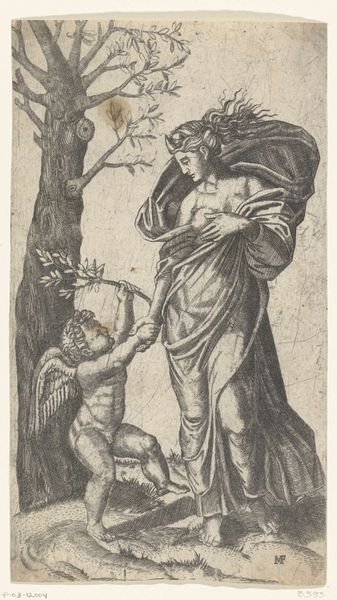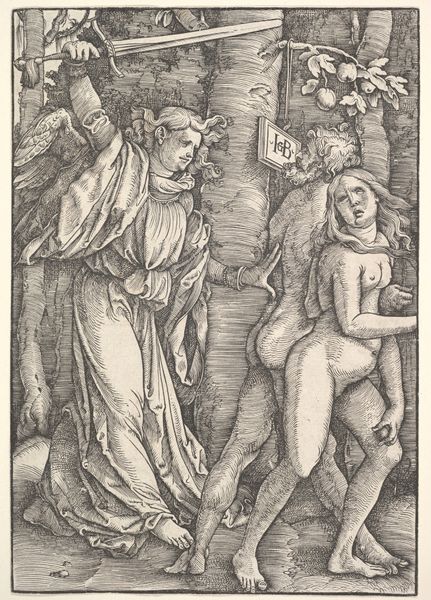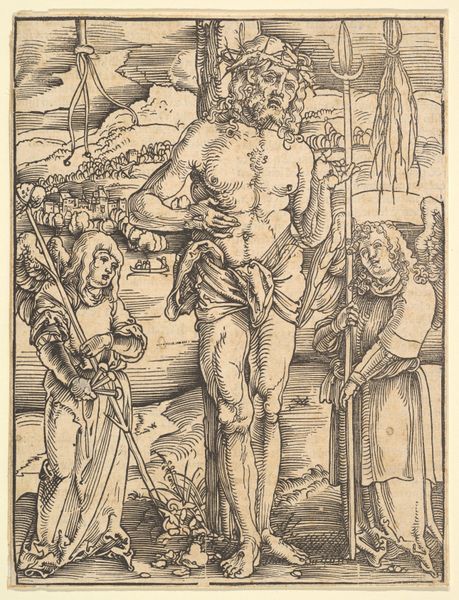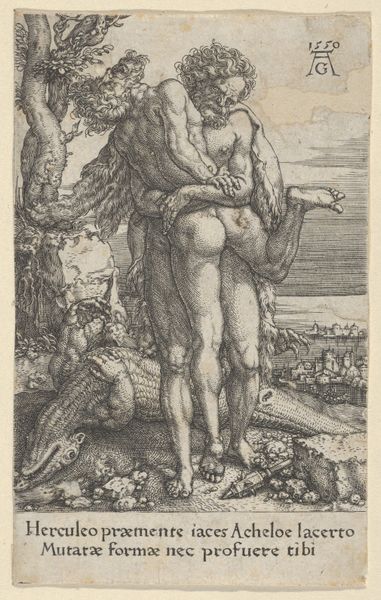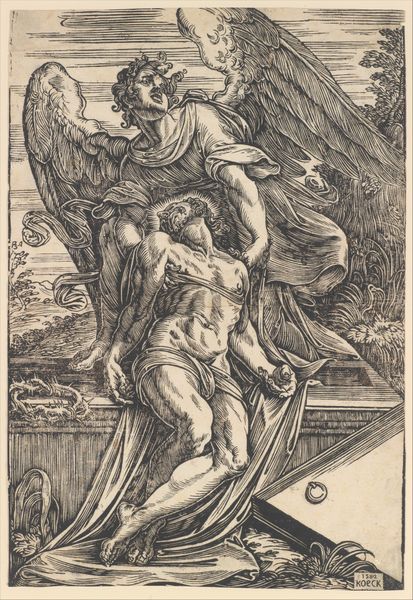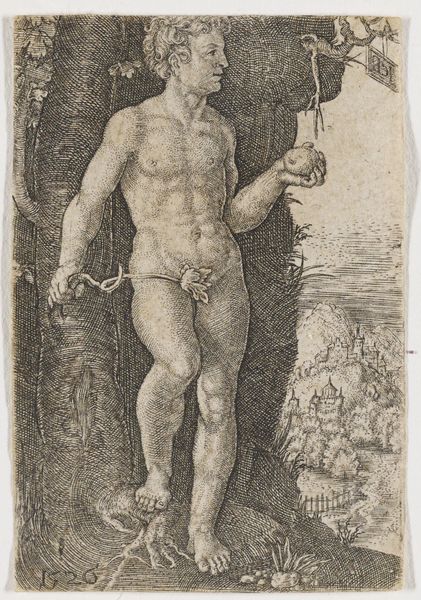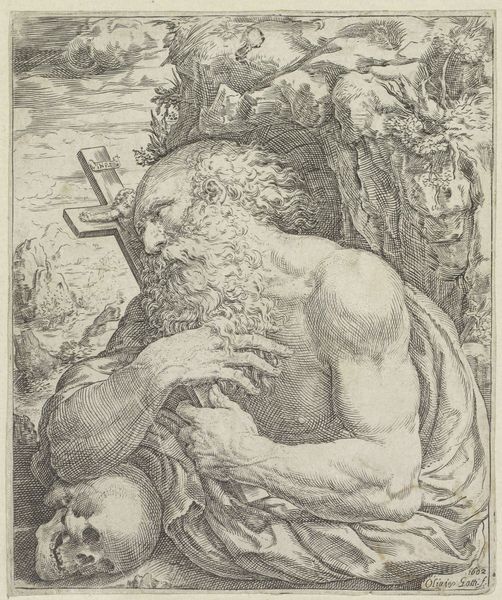
print, engraving
# print
#
landscape
#
figuration
#
11_renaissance
#
history-painting
#
northern-renaissance
#
academic-art
#
nude
#
engraving
Dimensions: height 65 mm, width 50 mm
Copyright: Rijks Museum: Open Domain
Editor: Here we have Sebald Beham’s “Adam sitting on a tree trunk holding an apple," created in 1519. It's an engraving, quite small, and there's something really compelling about the Adam's musculature set against the texture of the trees. What are your initial thoughts on this piece? Curator: The interplay of line is immediately striking. Notice how Beham uses hatching and cross-hatching to define Adam’s form and create volume. The light seems to emanate from within the figure, contrasting with the darker, densely worked background. Do you perceive a tension between the idealized form of Adam and the raw, almost grotesque rendering of the tree trunks? Editor: I do now! It's almost like the body is classical while the landscape is Northern European. What's the effect of that contrast, do you think? Curator: The contrast highlights the central struggle: the classical ideal of human perfection juxtaposed with the imperfection and decay inherent in the natural world after the Fall. The apple, carefully held, becomes a visual pivot point, doesn't it? The composition invites the eye to circle around him: shoulders, back, apple, trunks. All roads lead back to this central subject, which is him contemplating it. Editor: That's fascinating. I hadn’t considered how much the composition draws attention to that critical moment of choice. How does that linear style contribute? Curator: The meticulous linear style emphasizes detail and clarity. Beham uses line to delineate not just form but also texture – the rough bark of the trees, the smoothness of Adam’s skin. The lines create a sense of tactile quality and further that contrast you spotted, a kind of symbolic language defining this choice. Editor: It's amazing how much information he conveys through the simple medium of engraving! It definitely changes how I look at prints from this period. Curator: Indeed. By attending to the internal relations within the work itself, we appreciate how much it holds.
Comments
No comments
Be the first to comment and join the conversation on the ultimate creative platform.



